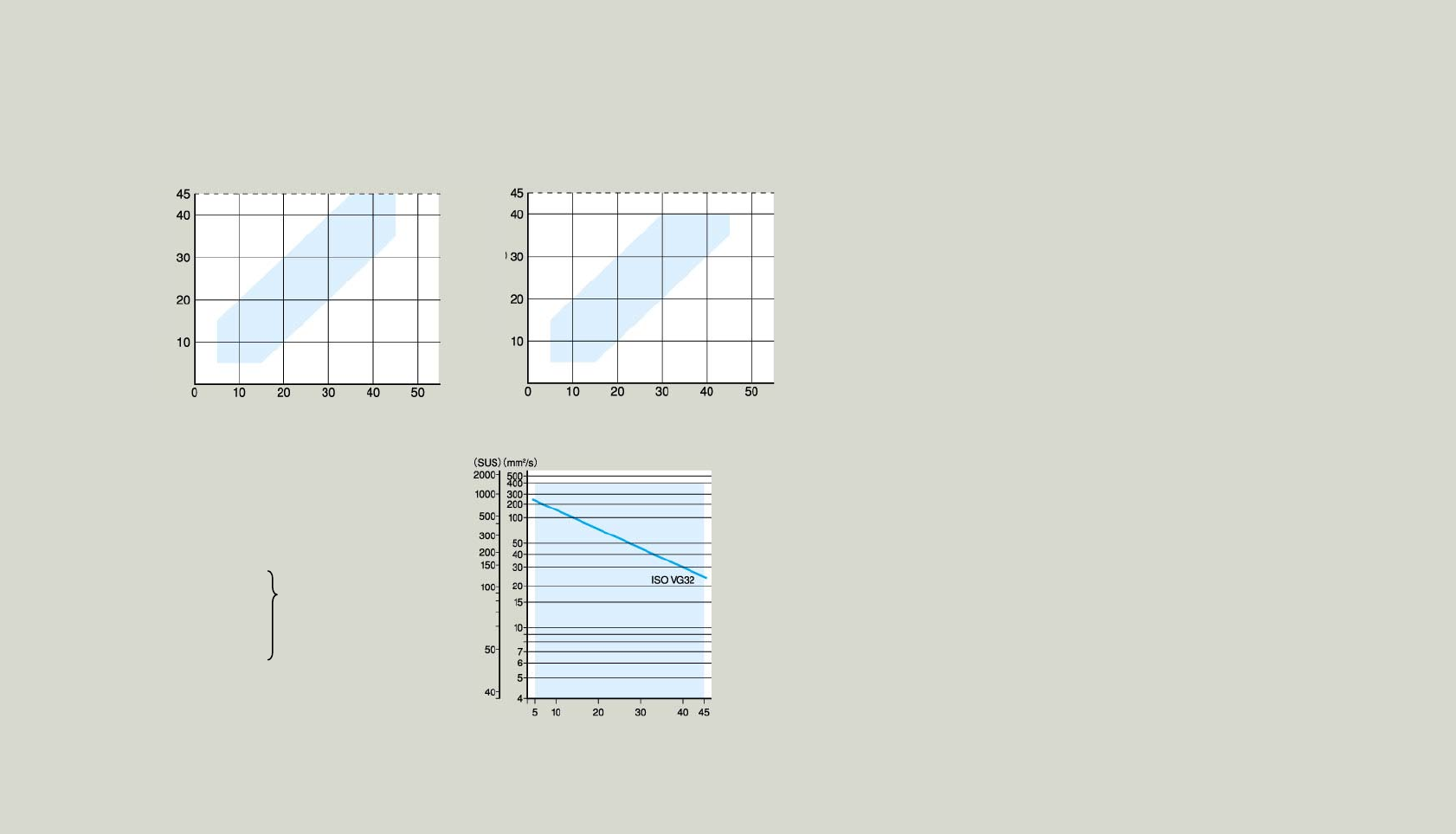Specifications

General precautions
37
About range of use
Since OIL MATIC uses a built-in chiller for cooling the liquid, there are limitations to the range of
ambient temperature and oil temperature that can be used. Please use the machine within the
range shown in the following diagrams.
About oil to use
There are limitations to types of liquids that can
be used for the OIL MATIC depending on the
intended use. The following liquids cannot be
used, except for some liquids.
♦ Cutting oil (fluid),
grinding oil (fluid)
♦ Water and
water-soluble
liquid
♦ Chemical and food liquids
♦ Highly-volatile liquids with poor lubricating
properties, such as gasoline and thinner
♦ Flame-retardant hydraulic oil
Phosphoester-series, chlorinated-hydrocarbon series, water+glycol
* For temperature control of special liquid, please consult us so that we will handle it separately with a special model.
Transportation method
When transporting or moving the OIL MATIC, do not tilt the machine
back and forth or side to side at a 40-degree angle or more. Tilting the
machine beyond the limit may cause a compressor failure. Also, do not
give strong shock or vibration to the machine. Doing so may cause gas
(refrigerant) leakage. Please pay due attention to the above since any of
them cannot be fixed in the field.
Installation site
Install the OIL MATIC horizontally in a location where it is free from
direct sunlight and vibration. The OIL MATIC takes in air from the
condenser part (see an appearance diagram). So let an intake vent take
in as low-temperature clean air as possible. If there is any equipment
that generates heat near the OIL MATIC, then consider the use of
partitions, etc. Since hot air is emitted from an exhaust vent (see the
appearance diagram) of the OIL MATIC, ensure proper airflow in space
in the emitting direction to prevent the hot air from flowing around the
machine.
Pipe connection
A pump built in the OIL MATIC uses a constant-flow pump (trochoid gear
pump) to gain stable heat exchange capability. Because of the
relationship between OIL MATIC’s internal structure and pump motor’s
output, use the OIL MATIC at a discharge pressure of 0.35 MPa (0.5
MPa with the drain port fully opened with total relief) or less and intake
pressure limit of -0.03 MPa or less. If the discharge pressure is 0.35
MPa or more; then a relief valve is activated, which not only reduces the
amount of oil sent and the cooling capacity but also increases the pump
noise. If the discharge pressure exceeds -0.03 MPa, then the pump
noise increases, the flow rate decreases, and the cooling capacity is
reduced. In addition, strong vibration is caused, which leads to OIL
MATIC failures. The higher the oil viscosity is under the same piping
conditions, or the lower the oil temperature is among the same oil (in
general, the oil viscosity increases when the oil temperature is low), the
pressure loss resulting from pipe resistance increases. So, when laying
out pipes, consider the wintertime low-temperature state. Based on the
above, reduce the pipe resistance as much as possible when laying out
pipes for OIL MATIC.
Series C, CL and ML Series V, KTV, MRCC and MLCC
Room temperature (°C)
Return liquid temperature (°
C)
* The range of use may vary with models.
Room temperature (°C)
Return liquid temperature (°
C)
Oil
temperature
(°C)
Can be used for the series
MRCC and MLCC
(excluding water)
and the series KTV and V
(water only).










